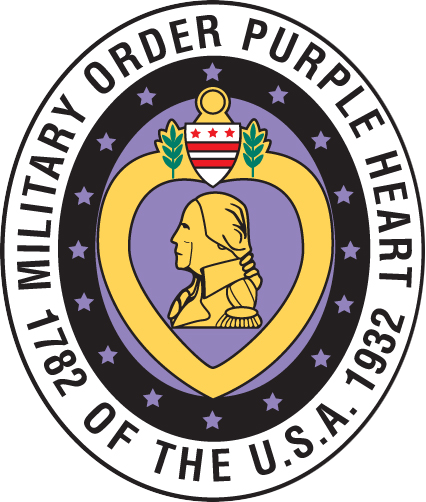Stephen J. Bodnar was born in Carteret, New Jersey. He grew up there and graduated from Carteret High School in the Class of 1943. He enlisted in the Army shortly afterward and was inducted into the Army Specialized Training Program in October 1943. Under that program, enlistees would be sent to College and upon graduation would receive a commission in the Army Engineers. But, Steve had signed up just as the Army was about to terminate that program, and he was quickly diverted into the Infantry.
In February 1944, he was assigned to Company I, 377th Infantry, 95th Infantry Division, then in training at Indiantown Gap, Pennsylvania. After only a few months there, they shipped out on the WEST POINT, a converted troop ship that in pre-war times had been the United States Lines luxury liner, AMERICA. They arrived in England in August 1944.
The next month, the 95th Division shipped over the channel to Normandy. Stephen Bodnar, with his unit, crossed over on an English ship and debarked onto OMAHA BEACH in September 1944. The breakout from the hedgerow country had been several months earlier and by the time the 95th Division had arrived the Allied Armies had raced deep into France nearly to the German border. Steve says, We thought the war was over, thats what the news indicated.. Baseball equipment was issued to the units and for three wonderful weeks we just played ball on the beach and enjoyed camping out. That time soon came to an end.
In October 1944, the division was assigned to General Pattons 3rd Army and it was moved up into the lines near Nancy, France. After about a month in action, the front had moved forward nearly to Metz. A big attack was planned for the day after the November National Elections. On November 8th, Steves 3rd Battalion led the 377th Regiment in a night attack. Their objective was a fortified Chateau at Maizieres-Les-Metz. Steve describes the action, When we reached the barbed wire, a machine gun opened up on us and I was hit in the leg. Our medic was either killed or wounded, nobody knows what happened to him. Anyway, he wasnt there and so I crawled back, slowly, on my own, until men in my unit could pick me up and get me back to safety. I was put onto a stretcher on a jeep and taken to the battalion aid station. The Doctor said I was in good shape and he gave me a shot of brandy. I asked for another, but, he told me no, and I got sent back to the Field Hospital. Gangrene quickly set in and three days later my leg had to be amputated, that was Armistice Day, November 11, 1944.
Stephen J. Bodnar arrived back in the U.S. on Dec 26th, and he says it was a cheerful sight when he came into Boston to Camp Edwards, it was snowing and there were Christmas lights everywhere. In Jan 1945 he was sent to England General Hospital, located in what had been an old hotel in Atlantic City, New Jersey. After one year there, he was moved to McGuire General Hospital in Richmond, Virginia, but; it closed two months after his arrival. He then spent his remaining time in the Army in Walter Reed Hospital in Washington, D.C. In all those medical facilities he was only one among many other orthopedic patients and he watched while other amputees learned how to walk again on artificial legs. Steve says, When it came time for my artificial leg to be fitted, I didnt see any point in going through any Physical Therapy training, I just got up and started walking on it. He was discharged from the Army, left Walter Reed on Aug 16, 1946, and went home to become a member of the 5220 Club (eligible to draw $20 per week for 52 weeks).
In 1947, Stephen Bodnar was married to the former Louise Brechka, who was also from Carteret, New Jersey. Together, they went off to Lafayette College in Easton Pennsylvania where Steve would earn a degree in Chemistry. In 1950, Steve entered the University of Illinois in Urbana, and completed his Phd. in Chemistry there. In 1954 he worked for ESSSO in Baton Rouge, Louisiana, and in 1960 he went to work for the Texas-U.S. Chemical Company (a subsidiary of Texaco) at Port Neches, Texas. The Bodnars lived in nearby Beaumont during all the years Steve worked in Port Neches until his retirement in 1988. He became a charter member and helped establish the Beaumont Chapter of MOPH. Stephen and Louise had visited Fredericksburg many times, attending their daughters horse shows and competitions; and they liked the place so well that they moved there in 1990. During the years since then, Steve has been an active member of the 95th Infantry Division Association, their Memorial Committee, and their Foundation, and he does the I-377 Newsletter. His wife passed away five years ago, but Steve remains fully occupied in Fredericksburg where two of their daughters also live.

95th INFANTRY DIVISION
SHOULDER
PATCH

GUIDEON OF COMPANY I
377th INFANTRY
REGIMENT


THIS PHOTO OF SOME OF THE MEN IN COMPANY I WAS TAKEN WITH A CAMERA THAT HAD BEEN “LIBERATED” FROM A GERMAN SOLDIER BY LIEUT CANFIELD SOMETIME AFTER STEPHEN BODNAR WAS WOUNDED, SO HE IS NOT IN THE PICTURE. SUCH PHOTOS WERE RARE BECAUSE THE MEN WERE NOT ALLOWED TO HAVE CAMERAS.
FRONT ROW, L—R, URBANSKI, HENSLEY, ZILKE AND KUPIAK. BACK ROW, HAROLD ODUM, BARSEMA, LARSEN, CRITTENDEN, McCOY AND CELENTANO.
SHORTLY AFTER THIS PHOTO WAS MADE, BARSEMA WAS K.I.A., AND ODUM, HENSLEY, LARSEN, CRITTENDEN, AND McCOY WERE W.I.A. LIEUT CANFIELD, THE REPLACEMENT PLATOON LEADER WHO TOOK THE PHOTO, WAS ALSO W.I.A.

Jeep Named “Stephen Bodnar”

Stephen Bodnar (On the right)
GI Breakfast Fredericksburg May 2004
https://mophaustin.org/wp-content/uploads/2021/07/bodnara.jpg|https://mophaustin.org/wp-content/uploads/2021/07/95thinf.jpg|https://mophaustin.org/wp-content/uploads/2021/07/95thinf377.jpg|https://mophaustin.org/wp-content/uploads/2021/07/bodnarb.jpg|https://mophaustin.org/wp-content/uploads/2021/07/bodnarc.jpg|https://mophaustin.org/wp-content/uploads/2021/07/bodnartoday.jpg

